Abstract
A randomised, controlled study of the use of postoperative continuous passive motion (CPM) and immobilisation regimen after total condylar knee arthroplasty was performed. CPM resulted in a significant increase in both the early and late range of knee flexion. This increase occurred in both rheumatoid and osteoarthritic patients. The improvement of 10 degrees at 12 months allowed additional important function to be attained. CPM resulted in significantly earlier discharge from hospital. It did not increase the clinical incidence of wound healing problems, nor did it significantly increase the postoperative fixed flexion deformity or the extension lag. CPM can be recommended as a safe and effective modality to achieve more rapid and more successful postoperative rehabilitation after knee arthroplasty.
Full text
PDF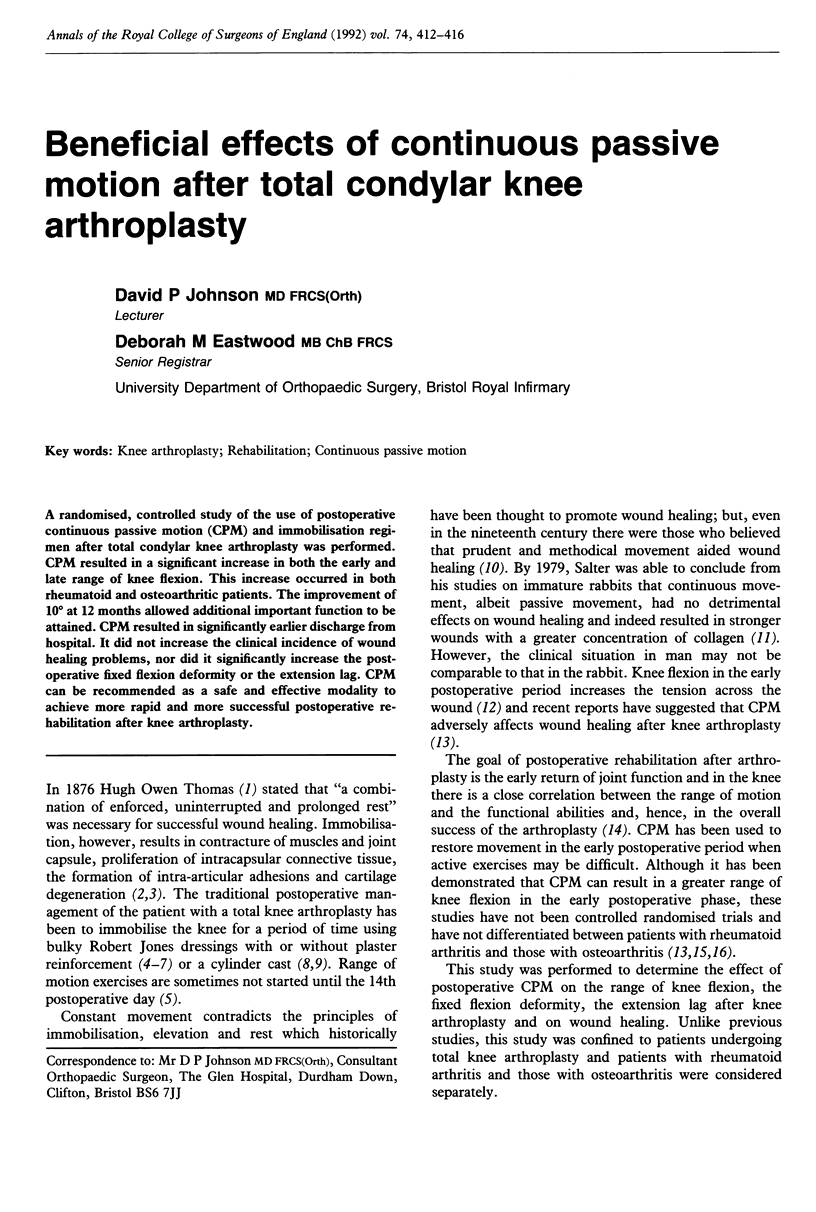
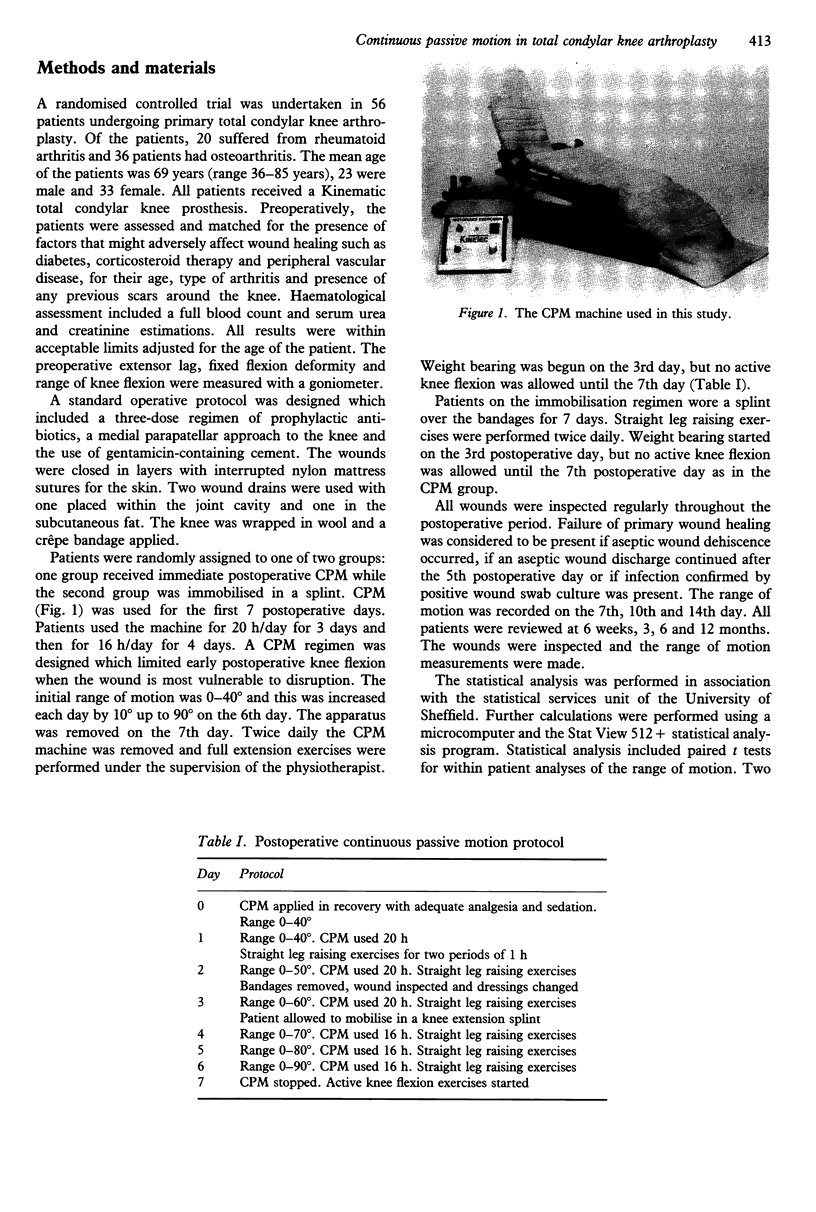
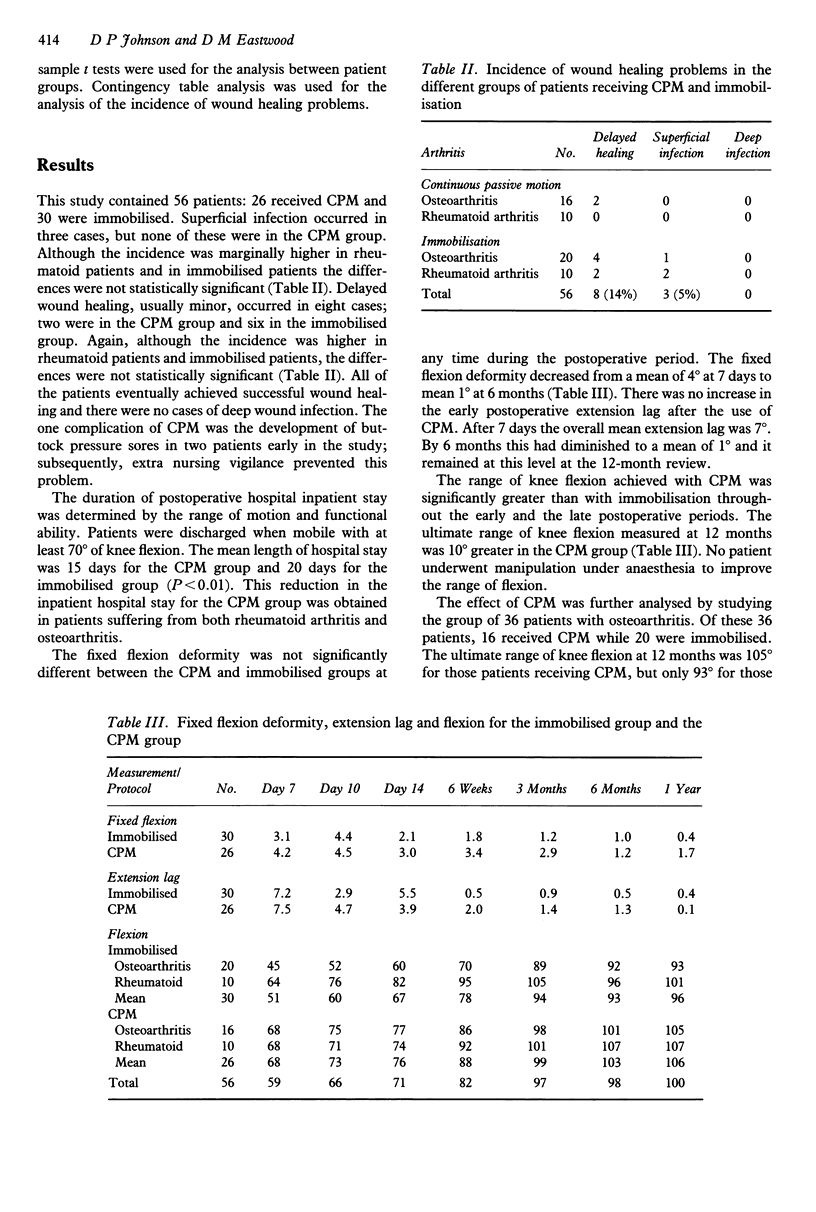
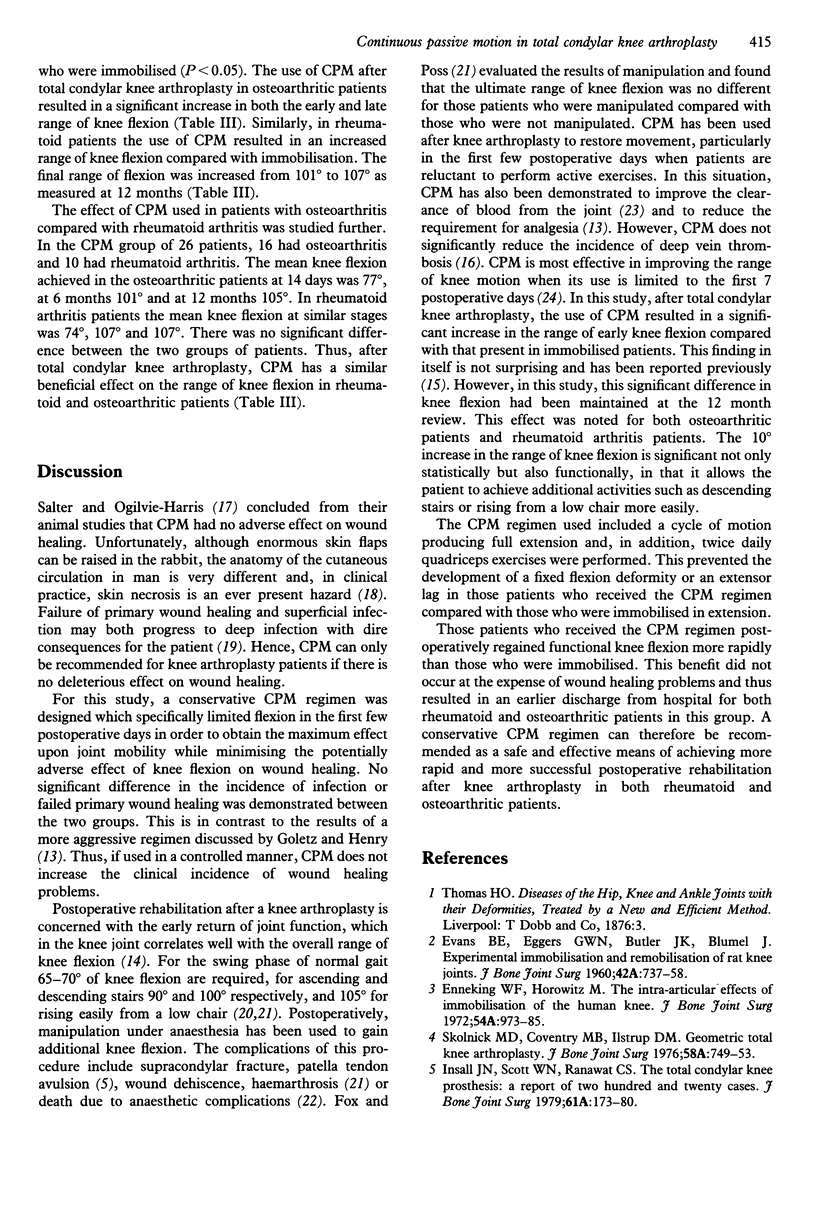
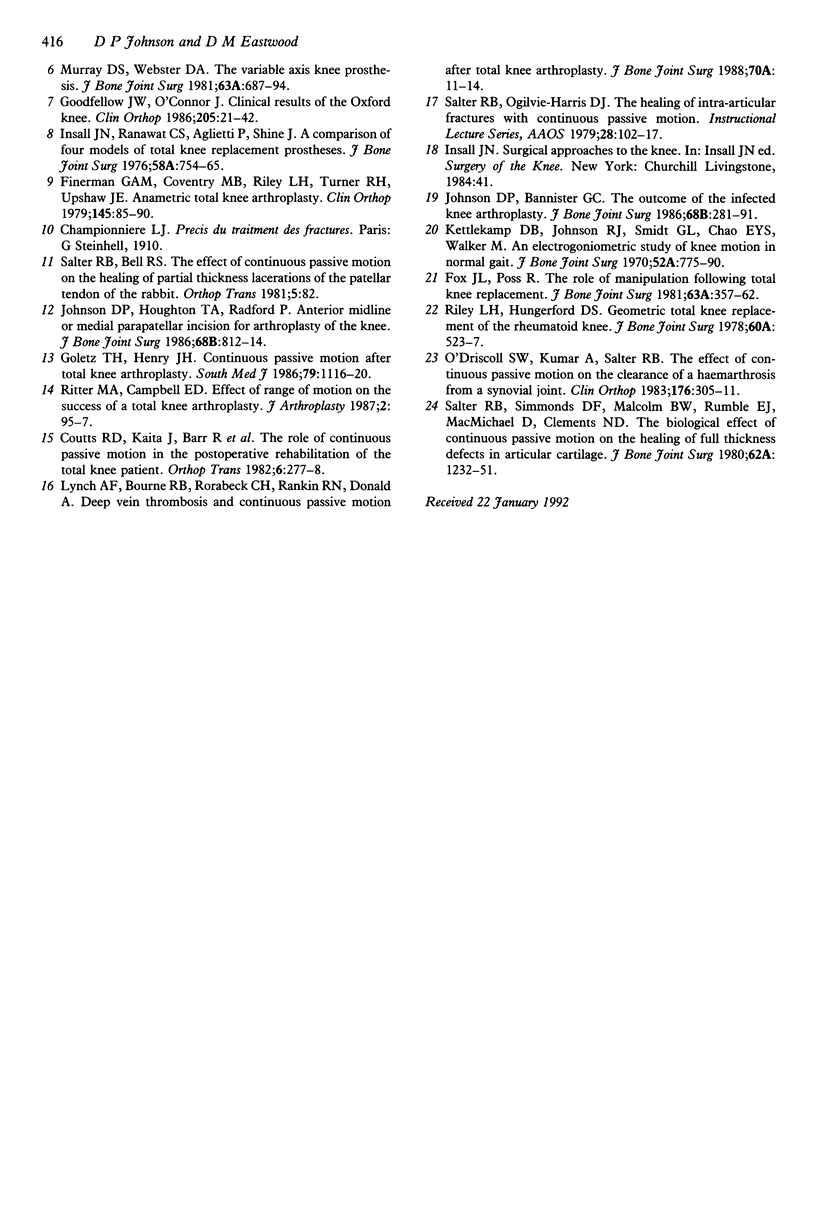
Images in this article
Selected References
These references are in PubMed. This may not be the complete list of references from this article.
- Enneking W. F., Horowitz M. The intra-articular effects of immobilization on the human knee. J Bone Joint Surg Am. 1972 Jul;54(5):973–985. [PubMed] [Google Scholar]
- Finerman G. A., Coventry M. B., Riley L. H., Turner R. H., Upshaw J. E. Anametric total knee arthroplasty. Clin Orthop Relat Res. 1979 Nov-Dec;(145):85–90. [PubMed] [Google Scholar]
- Goletz T. H., Henry J. H. Continuous passive motion after total knee arthroplasty. South Med J. 1986 Sep;79(9):1116–1120. doi: 10.1097/00007611-198609000-00019. [DOI] [PubMed] [Google Scholar]
- Goodfellow J. W., O'Connor J. Clinical results of the Oxford knee. Surface arthroplasty of the tibiofemoral joint with a meniscal bearing prosthesis. Clin Orthop Relat Res. 1986 Apr;(205):21–42. [PubMed] [Google Scholar]
- Insall J. N., Ranawat C. S., Aglietti P., Shine J. A comparison of four models of total knee-replacement prostheses. J Bone Joint Surg Am. 1976 Sep;58(6):754–765. [PubMed] [Google Scholar]
- Insall J., Scott W. N., Ranawat C. S. The total condylar knee prosthesis. A report of two hundred and twenty cases. J Bone Joint Surg Am. 1979 Mar;61(2):173–180. [PubMed] [Google Scholar]
- Johnson D. P., Houghton T. A., Radford P. Anterior midline or medial parapatellar incision for arthroplasty of the knee. A comparative study. J Bone Joint Surg Br. 1986 Nov;68(5):812–814. doi: 10.1302/0301-620X.68B5.3782252. [DOI] [PubMed] [Google Scholar]
- Kettelkamp D. B., Johnson R. J., Smidt G. L., Chao E. Y., Walker M. An electrogoniometric study of knee motion in normal gait. J Bone Joint Surg Am. 1970 Jun;52(4):775–790. [PubMed] [Google Scholar]
- Lynch A. F., Bourne R. B., Rorabeck C. H., Rankin R. N., Donald A. Deep-vein thrombosis and continuous passive motion after total knee arthroplasty. J Bone Joint Surg Am. 1988 Jan;70(1):11–14. [PubMed] [Google Scholar]
- Murray D. G., Webster D. A. The variable-axis knee prosthesis. Two-year follow-up study. J Bone Joint Surg Am. 1981 Jun;63(5):687–694. [PubMed] [Google Scholar]
- O'Driscoll S. W., Kumar A., Salter R. B. The effect of continuous passive motion on the clearance of a hemarthrosis from a synovial joint. An experimental investigation in the rabbit. Clin Orthop Relat Res. 1983 Jun;(176):305–311. [PubMed] [Google Scholar]
- Salter R. B., Simmonds D. F., Malcolm B. W., Rumble E. J., MacMichael D., Clements N. D. The biological effect of continuous passive motion on the healing of full-thickness defects in articular cartilage. An experimental investigation in the rabbit. J Bone Joint Surg Am. 1980 Dec;62(8):1232–1251. [PubMed] [Google Scholar]
- Skolnick M. D., Coventry M. B., Ilstrup D. M. Geometric total knee arthroplasty. A two-year follow-up study. J Bone Joint Surg Am. 1976 Sep;58(6):749–753. [PubMed] [Google Scholar]



